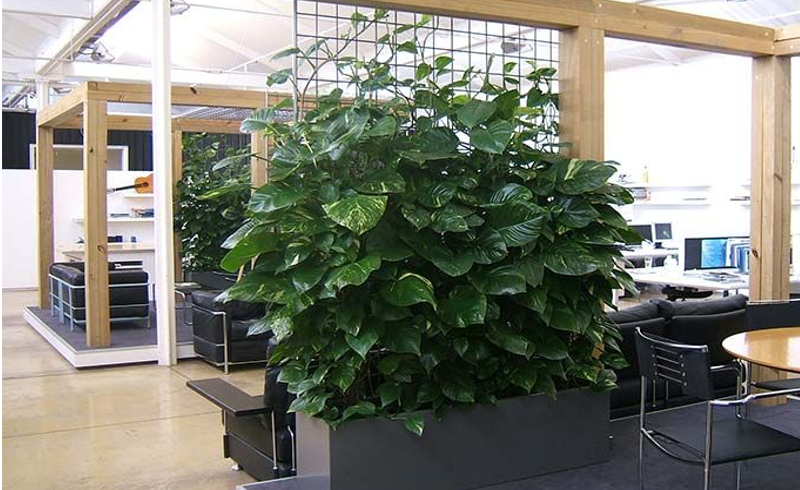People in industrialized countries spend more than 80% of their lives indoors, increasingly in air-tight buildings that aren’t particularly good for human health

These structures require less energy for heating, ventilating, and air conditioning, but can be hazardous if particulate matter and potentially toxic gases, including carbon monoxide, ozone, and volatile organic compounds, from sources such as furniture, paints, carpets, and office equipment accumulate.
Plants absorb toxins and can improve indoor air quality, but surprisingly little is known about what plants are best for the job.
Frederico Brilli, a plant physiologist at the National Research Council of Italy – Institute for Sustainable Plant Protection, and colleagues conclude in a review published in Trends in Plant Science that a better knowledge of plant physiology, along with integration of smart-sensor-controlled air cleaning technologies, could improve indoor air quality in a cost-effective and sustainable way.
Plants improve air quality through several mechanisms:
- they absorb carbon dioxide and release oxygen through photosynthesis
- they increase humidity by transpiring water vapor through microscopic leaf pores
- and they can passively absorb pollutants on the external surfaces of leaves and on the plant root-soil system.
But plants are usually selected for indoor use not for their air-purifying abilities but for their appearance and ability to survive while requiring little maintenance.
“For most of us plants are just a decorative element, something aesthetic, but they are also something else” says Brilli.
Surprisingly little research has been done to quantify the effects of different plant species on air quality.
NASA performed pioneering work in the 1980s, but they relied on a simple experimental approach; studies with more sophisticated, modern research methods have not yet been conducted.
Further research is needed identify the characteristics of the highest-performing plant species in indoor environments, including their morphology (i.e. leaf shape and size), anatomy, and physiology (i.e., CO2 assimilation rate).
According to Brilli, such studies could show how to “optimize the use of plants indoors, in terms of how many plants per square meter we need to reduce air pollution to a certain level.”
Research is also needed to understand plant microbiomes: the populations of microorganisms (bacteria and fungi) that live with plants both in the soil and on leaf surfaces.
This microbiome participates in the removal of airborne pollutants, but the contribution of different microbial species to removing pollutants is currently unknown.
Some microbiomes could also have negative effects on human health, including triggering allergies and lung inflammation problems, so knowing how to identify and avoid those will be important.
Brilli and colleagues do not envision plants replacing modern heating, ventilation, and air conditioning systems, but they argue that integrating plants with air cleaning technologies could make those systems more cost-effective and sustainable.
Says Brilli, “plant physiologists should work with architects to improve the green indoors.”

